Ask Kawasaki about the intended consumer for its Versys 1000 LT, and you'll get an answer that ranges between long-distance riders to older males and just about anyone who wants to ride two-up—comfortably, at least. As a performance-hungry 25-year-old, I am not the intended consumer.
More than that, I do not initially see the benefits of Kawasaki importing the Versys 1000 to the States for 2015 (the bike has been available in Europe since 2012). Riders looking for a sporty mount with luggage option and moderate range need look no further than the Ninja 1000, while Kawasaki fans wanting a true sport-tourer need look no further than the updated 2015 Concours 14 tested elsewhere in this issue. Sure, the Versys 1000 has obvious advantages over either of these models in certain circumstances, but is the gap between the Ninja 1000 and Concours 14 really big enough for the Versys 1000 to slide comfortably into Kawasaki Motors Corp.'s 2015 lineup?
Same-ish But Different
The questions and concerns regarding consumer overlap stem, of course, from the abundance of similarities between the Versys 1000 and Ninja 1000/Z1000, each of which are based on a 1,043cc inline-four-cylinder engine and five-piece, cast-aluminum frame. An alternate cylinder head on the Versys 1000 drops the compression ratio significantly from 11.8:1 to 10.3:1, while different cam profiles provide more low- to midrange torque. Kawasaki has modified the gear ratios—first gear is shorter on the Versys, second is the same, while third through sixth are taller—and goes on to say that, "The Versys has lower peak power than the Z1000 or Ninja 1000, but there's more torque in the low- to mid-rpm range. Each of the changes are mainly for touring comfort and for usable power in the low- to mid-rpm range."
The chassis is different in geometry and footpeg location. Trail remains at 4 inches, while rake climbs from 24.5 degrees on the Ninja 1000 to 27 degrees on the Versys 1000, presumably because the older—er, more mature—Versys rider is expected to put less emphasis on supersport-like agility on a tight road. Suspension on the Versys 1000 consists of a 43mm Kayaba fork with adjustable rebound and spring preload, plus shock with adjusters for rebound damping and spring preload, in addition to a remote preload adjuster. Travel for the fork and shock is 5.9 inches, versus 4.7 and 5.4 inches for the Ninja 1000 fork and shock respectively.
The updated Versys 1000 uses a new combination of rubber and rigid engine mounts; the two top mounts are rubber instead of rigid. Standard-mount front brake calipers bite on 310mm dual front brake rotors, and Bridgestone Battlax T30 sport-touring tires come standard.
Traction control and two power modes—Low or Full—enable you to transfer power to the ground without asking too much of those T30 tires. Low riding mode reduces power output by 25 percent while also providing a milder throttle response that’s determined by rpm, throttle position, and gear position. Similarly, KTRC takes a mass of information into account to manage traction in Levels 1, 2, or 3, the latter of which is intended for wet roads. Important information is given via a display with analog tachometer and LCD panel that’s curiously devoid of a gear position indicator. At least there’s a fuel gauge to go along with the other information that’s provided. (Note: Kawasaki mounted its accessory gear position indicator—$206.95—to all testbikes. Said indicator was easy to read but also positioned away from where you’re typically looking, so useful but not totally worth jumping on.)
It’s hard to conceal the 1000’s dimensions or long-range intentions, but the Kawasaki’s new lines and horizontal headlight design, which come as part of the new “Kawasaki face,” help. “The Versys’ look didn’t always confirm the bike’s sportiness. Now the bike looks as sporty as it feels,” Kawasaki says.
Sporty, Really? Okay, Sporty It Is.
"Sporty" is obviously a relative term, one that you would not generally use to describe a bike with 549-pound claimed curb weight and 33.1-inch seat height. Regardless of these numbers, the Versys feels extremely comfortable and easy to manage at around-town speeds for average-size humans with decent inseam. It's big, yes, but no larger or cumbersome than the other bikes in this category, which include the Suzuki V-Strom 1000 ABS, Yamaha Super Ténéré, KTM 1190 Adventure, and BMW R 1200 GS.
The 1000’s ergonomics and aerodynamics add to the experience. Reach to the one-piece handlebar leaves a comfortable bend in your arms, while the footpegs feel perfectly positioned for long-range comfort without that slightly rearward position of the Ninja 1000’s or Z1000’s pegs. The seat foam is soft but supportive enough to keep your derrière from bringing your ride to an early end. Or at least sucking the fun out of an 800-mile day.
The Versys’ windscreen, which is wide at its base and tapered toward the top, plus adjustable between a 2.95-inch range, is, however, the biggest contributor to overall comfort. Picture yourself perched atop a saddle where there’s minimal buffeting or wind noise but at the same time great airflow. That’s life in the Versys 1000 cockpit, which is only mired by manual adjustment knobs on the outside of the screen that are probably placed so as to discourage you from on-the-fly windscreen adjustments. Fortunately, with a decent reach and some coordination, you can still make these adjustments on the go.
Kawasaki’s 1,043cc engine is just as sweet as we remember it being on the similarly spec’d Ninja 1000 and Z1000 but also more versatile thanks to the updated ratios for third through sixth gear. First gear is short enough that you’ll use it almost only for extreme stoplight-to-stoplight riding scenarios, while anything above third feels great for flowing sections of road, where you can still take advantage of the engine’s low-end and midrange torque. Power delivery is linear, meaning there’s no rush of power up top or huge push down low—just smooth, tractable power that makes the bike feel extremely manageable and user-friendly. Other aids include seamless fueling and equally charming transmission—Kawi really knows how to build a transmission.
You can feel the Versys’ heft as you coax the bike off the center of the tire and into a corner, but we wouldn’t describe the bike as slow steering or ill handling. In fact, the 180/55-size tire used on the Versys 1000 gives the bike much more linear and manageable steering traits than the 190/50-equipped Ninja 1000. Handling is predictable and confidence-inspiring, plus the bike is ultra stable at highway speeds.
Suspension is good, though the Versys 1000 we rode did feel as though it could use some rebound damping for better control on the backside of bumps. That adjustment is easy enough, of course, and in all other regards the suspension is up to snuff, providing good comfort on the interstate with enough support for aggressive riding from the exit ramp and beyond. Remote preload is a nice touch, especially for a bike that’s designed very specifically for riders who want to travel with a passenger.
Wet conditions during the first half of our ride kept those instances for aggressive riding to a minimum but also offered a good look into Kawasaki’s KTRC traction control system, which we tried in Levels 1 and 2. Intervention in either mode was smooth and not nearly as interruptive as we expected considering road conditions, proof that Kawasaki’s intention with its traction control system is to lend a hand rather than to maintain complete control. In extreme conditions, like when riding over wet paint, ABS and TC were there for us. In less treacherous conditions, the system left outright control to our right wrist.
We did not load either of the Versys 1000 LT’s 28-liter hard saddlebags to the brim but played with the setup for a few minutes and can say that the mechanism is relatively pain free. Removing the bags can be a bit notchy, but you don’t have to tap your head while rubbing your stomach and spinning in circles to get a bag off the bike, as you do with some of the other more complex systems. The 1000 LT, the only version of the Versys 1000 that will come to the States in 2015, is also outfitted with hand guards that do their job in adverse conditions like rain or cold climes. With the help of Kawasaki’s accessory heated grips ($289.95), our hands were dry and warm by the end of our day aboard the 1000 LT.
Time Will Tell, But…
Kawasaki's Ninja 1000 has, and will always have, a special place in my heart. It was the first bike I ever tested as a motojournalist, has ably taken me to and from California's central coast on multiple occasions, and always been a comfortable bike that simultaneously provides the performance my 24-year-old self longs for when the road tightens up. Even still, if forced to choose, I'd probably opt for the Versys 1000 over the Ninja 1000. The Versys is not the absolute sharpest tool in the sportbike world, but its long-range comfort and inspired handling go a long way toward getting you (and a passenger) from point A to a far-away point B with a smile on your face.
Now, it will be interesting to see how consumers respond to the increase in options within Kawasaki’s lineup this year.
Specifications - 2015 Kawasaki Versys 1000 LT
MSRP: $12,799
Engine
Type: Liquid-cooled, transverse DOHC inline-four, 4 valves/cyl.
Displacement: 1043cc
Bore x stroke: 77.0 x 56.0mm
Compression ratio: 10.3:1
Induction: DFI, 38mm throttle bodies, dual injectors/cyl.
Chassis
Front tire: 120/70ZR-17 Bridgestone Battlax T30
Rear tire: 180/55ZR-17 Bridgestone Battlax T30
Rake/trail: 27.0°/4.0 in. (101.6mm)
Wheelbase: 59.8 in. (1519mm)
Seat height: 33.1 in. (841mm)
Fuel capacity: 5.5 gal. (20.8L)
Claimed wet weight: 549 lb. (249kg)
Related articles:










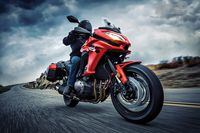
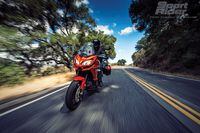
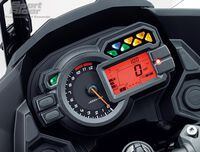
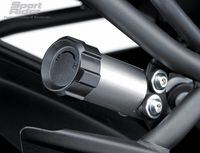
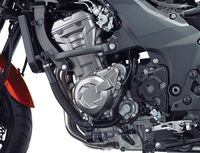
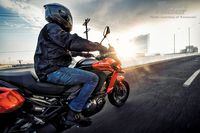
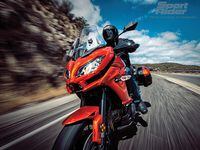
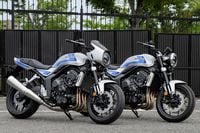

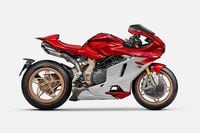
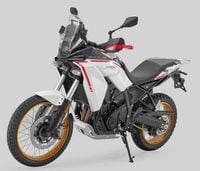
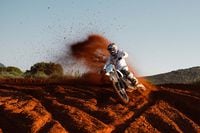
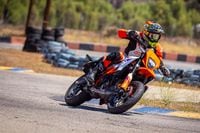
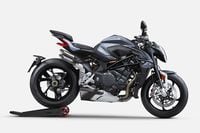
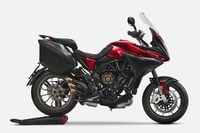
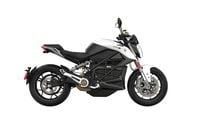
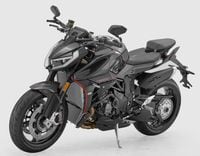




/cloudfront-us-east-1.images.arcpublishing.com/octane/URQMNYZZ6ZBM5LXGREBV3Y72OM.jpg)
/cloudfront-us-east-1.images.arcpublishing.com/octane/XH2ETEU4NVGDFNQO2XT2QQS5LU.jpg)
/cloudfront-us-east-1.images.arcpublishing.com/octane/DUGAQC2GQJCXFILEECQK2Q6T7I.jpg)
/cloudfront-us-east-1.images.arcpublishing.com/octane/4OGCCVR7WZGYDOWK4CGDTHXITA.jpg)
/cloudfront-us-east-1.images.arcpublishing.com/octane/GQV7Y6XT6FGZDIXO4P2IVJNSYE.jpg)
/cloudfront-us-east-1.images.arcpublishing.com/octane/X47GL62AXNALRHQLLBELY5WRMY.jpg)
/cloudfront-us-east-1.images.arcpublishing.com/octane/7OY2GP3FWFEDVEMDSLNGM6PZRM.jpg)
/cloudfront-us-east-1.images.arcpublishing.com/octane/Y3XYCFONBBBAHN6BWJDTWDY3FE.jpg)
/cloudfront-us-east-1.images.arcpublishing.com/octane/P3DLTISFGJA43L5QXVH7365UNY.jpg)
/cloudfront-us-east-1.images.arcpublishing.com/octane/H6FFG4YQMREO3DTADIJMECNS7Y.jpg)